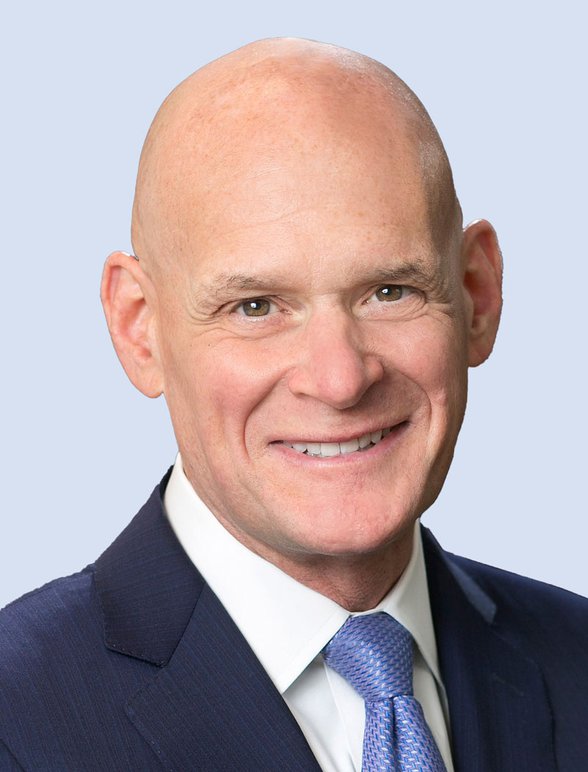Listen to the latest episode of Credit Exchange with Lisa Lee
Published in London & New York
10 Queen Street Place, London
1345 Avenue of the Americas, New York
Creditflux is an
company
© Creditflux Ltd 2025. All rights reserved. Available by subscription only.


Opinion Direct lending

Private equity firms believe M&As and exits are looking up — and they still like continuation vehicles
by Randy Schwimmer

Randy Schwimmer
Vice chairman
Churchill Asset Management
Continuation vehicles are mainly being used to hold on to trophy businesses
Recently, it’s been easy to pick on private equity. As buyers, the rise of interest rates since 2022 almost doubled financing costs for leveraged buyouts, making it difficult to meet return targets. As sellers, that dynamic created headwinds to reach valuation multiples achieved at the market’s peak in 2021. Sponsor M&A has slowed since then, hurting exits and inhibiting realisations for LPs — all a drag on fundraising.
But on closer inspection, we find a brighter picture. First there’s the huge pipeline of unexited global corporate M&A. Valued at USD 3tn, it’s waiting for lower rates to boost lending. Rome wasn’t built in a day; it won’t be sold in a day. Through 30 June, global deal activity was up versus 2023 and 2024. As noted in the August issue of Creditflux, our recent survey of 164 PE executives reflects that confidence. We note that macros — rates, the economy and consumer spending — are solid for private credit, despite trade and geopolitical noise.
The effects of tariffs have been isolated
Our survey revealed improved confidence in both the M&A environment over the next 12 months as well as the exit activity emerging from that. Survey respondents also said tariff effects have been isolated — beneficial to business and financial services, utilities and tech, but not favourable for consumer and auto.
Our own deal flow has accelerated month-over-month since Liberation Day. But key to investor confidence is maintaining portfolio quality. Most opportunities are curated from 400 general partners (where we are investors and often advisory board members). The quality of asset managers’ portfolios determines success as investors keep the flywheel spinning.
As we’ve noted in the past, relationships and speed and certainty of execution remain the top priorities for GPs when selecting private capital providers. Amid the see-saw elements of tariffs, rates and other macro issues, this is critical to ensure sellers have confidence their chosen buyers can close. Doing the last deal, and the familiarity with the sponsors’ credit agreement requirements, is often key to winning the next deal.
Price and terms was the third most popular consideration. This is important for investors to understand why private credit spreads and financial covenants are stickier than those of liquid alternatives. When headline risks force public credit to the sidelines, or (in a frothy market) push yields lower and loosen terms, investors become challenged.
Flexibility and hold size are private equity’s next priorities when assessing financing partners. They both matter (and are related) when competing with banks in the broadly syndicated market. With investment banks running increasingly competitive auction processes for larger deals, having the ability as a buyer to structure complex debt packages is a distinct competitive advantage.
Ranking the best ways to finance buyouts
Over the past two years, 95% of respondents used senior lending in financing buyouts. The next most popular vehicle (85%) is equity co-investment, followed by junior capital (60%) and continuation vehicles. Going forward, most PE leaders plan to keep current strategies, while 36% will increase senior lending and 33% will expand use of continuation vehicles (CV).
As a reminder, CVs allow GPs to keep control of prized assets longer, rolling them into a new fund with new investors. Existing LPs which wish to cash out can do so without waiting for loans to pay off or be refinanced. Of the respondents that used CVs in the last two years, 88% did so to hold onto trophy businesses and offer LP liquidity. More than two-thirds (68%) of PE firms using continuation vehicles executed single-asset transactions, highlighting the focused nature of this approach.
To the question, “If the M&A environment improves and interest rates decline, how would that impact your likelihood of pursuing a continuation vehicle?”, 71% of respondents answered, “No change”. 21% said declining rates would decrease their interest in CVs; 9% said their interest would increase.
It is no surprise, then, that investor sentiment reflects this support for private capital, with appetite consistent across a variety of institutional and wealth clients. The best managers delivering solutions to PE sponsors can do the same across a broad risk/return spectrum to investors. The key is winning deals and accessing markets while staying investor-centric in asset selection.





